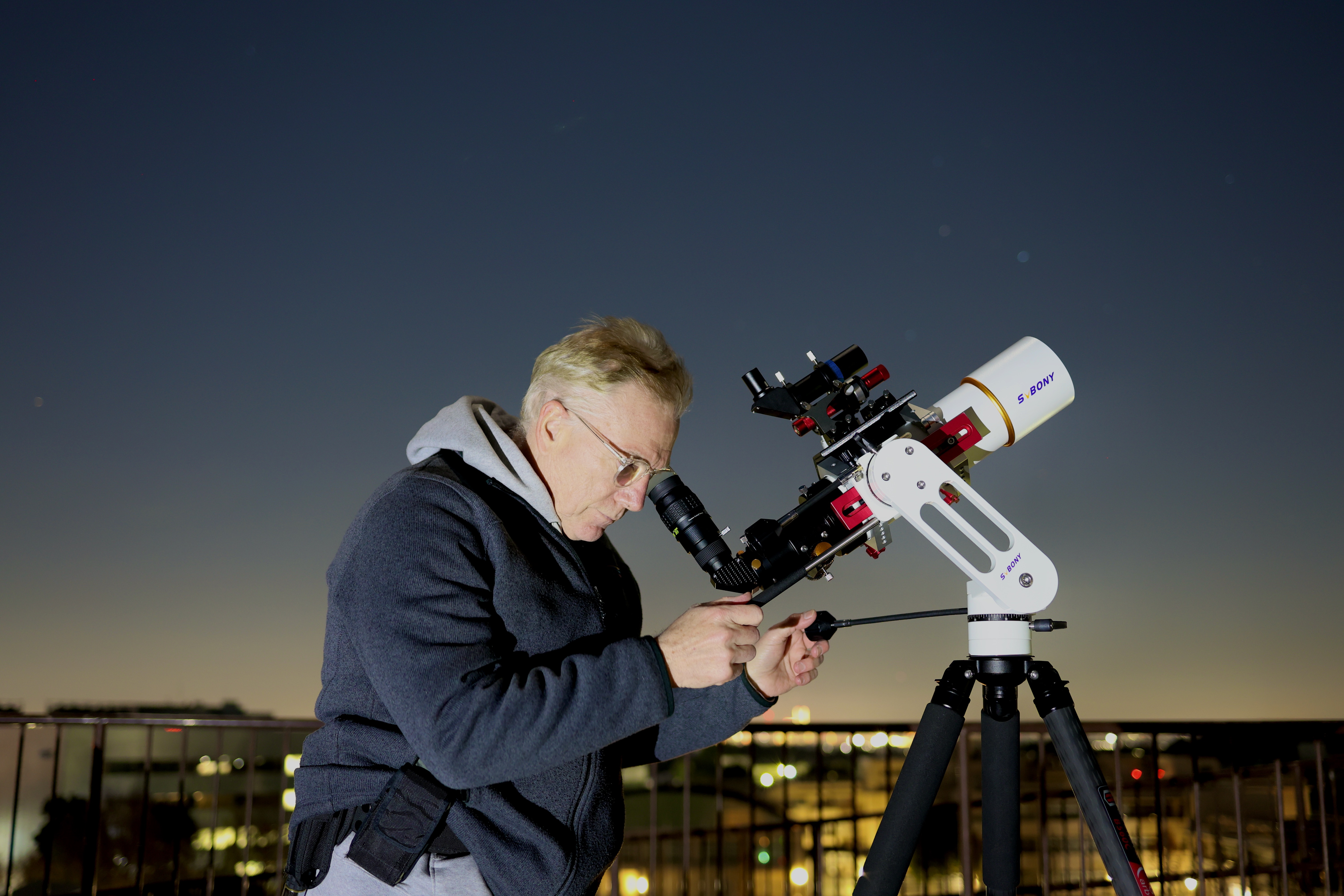New Lakeland Lecture Covers the Field of Astrophotography
On May 23, 7pm, astrophotographer Dr. Paul E. Cizdziel will be our next guest speaker for LUJ's ongoing Lakeland Lecture series. His talk is titled "Modern Amateur Astrophotography: Equipment and Imaging Considerations." If you're into outer space and would love to figure out a way to see it more clearly without actually leaving the Earth, you might want to check out this lecture.
After a dynamic and successful career in the biotechnology industry, Dr. Cizdziel (pronounced 'cheese-jel') retired in 2023. A Yokohama resident, Dr. Cizdziel has his own YouTube channel (JPAstroGuy), to give viewers the experience of deep sky astrophotography.
Dr. Cizdziel was kind enough to answer a few of our questions before May 23. Read on to learn more about this exciting and ever-changing field.
In your years of astrophotography, is there a part of the solar system, perhaps a planet, that you find the most fascinating to look into?
Under the light polluted skies of Kanto, the visual astronomy experience is limited to the moon, planets, (i.e. solar system objects) and stars. Nearly all deep-sky-objects like galaxies and nebulae cannot be seen visually. They require dark skies and big telescopes. Perhaps my favorite targets to look at are globular star-clusters. These extra-galactic (satellite) star clusters can be seen in Yokohama (where I live), but just barely. Under darker skies, they are amazingly beautiful.
As for astrophotography, I mostly love to image colorful nebulae and comets. The former (nebulae) are beautiful, plentiful, colorful and represent both the birth and death of stars. The latter (comets) are incredible in their speed and make great timelapse videos; especially when they "pass-nearby" other interesting celestial objects in the starry background.
Recently the James Webb Space Telescope has been in the news, showcasing parts of space never seen before. What would you say are the most important discoveries made by this telescope, launched in 2021?
The James Webb telescope has offered astronomers unprecedented resolution, magnification and the ability to view things in infrared. It is providing new insights into local star formation and blackholes and other galactic objects, by seeing through great amounts of dust and debris that block visible light. And in cosmology, it is certainly providing new data that requires rethinking of our models regarding the origin and age of the universe.
But perhaps most of all, it is simply amazing to me, that a ten-billion-dollar project with incredible and enormous complexity was designed for space, assembled and deployed in nearly flawless fashion to an orbit beyond the moon! That in itself (its functional existence) is a milestone achievement for mankind in the 21st century!
Astrophotography sounds like an exciting but challenging field of interest. What starting-out advice would you give someone who simply loves to look out into space but wants to delve deeper?
My interest in the sky originated from visits to dark sky territories, like Chiba or Izu. The difference is amazing! Whether you are a beginner or advanced, everyone needs a set of binoculars and to gaze at some dark skies. Modest binoculars like 6x to 10x power and 40mm to 50mm aperture are enough (e.g. 8x40). You will be amazed how much more you can see, even in Tokyo. But to understand what`s up there and how to find it, it is necessary to get a smartphone augmented reality app like SkySafari (or others). With that, you can find and identify anything you can see in the sky!
As for actual astrophotography, much can be achieved with mirrorless or DSLR cameras, and any camera lens. Imaging the Milky Way or star constellations to learn the craft and get familiar with the issues of astrophotography is a logical start (if you already have a camera). I did not own a camera originally (other than my smartphone), so I immediately bought a small telescope and used it together with an eyepiece adapter. Start small and simple; definitely less than 500mm focal length is advisable for either visual or imaging. And stick with decent, known name-brand suppliers. Be sure to get a decent Alt-Az mount (Altitude Azimuth) to hold and point the scope; otherwise, you will be frustrated.
Visual astronomy is a wonderful pass-time, but quite limited due to the light pollution around here. I believe, if you have tried some (or all) of the above, and your appetite is still strong, you may then be ready for the next level. Now-a-days, the next level is probably an integrated SmartTelescope. One can be had for as little as $500 (US) and can provide surprisingly detailed pictures of deep sky objects like galaxies and nebulae (even from Tokyo). The SeeStar S50 (ZWO) or Dwarf 2 (Dwarf Labs) are low- cost amazing astrophotography instruments that require little to no knowledge. Even many experienced astrophotographers love them. But know in advance, and be prepared, the hobby will be expensive if you want to move beyond that to the next level.
You can easily drop $2000 to $4000 on your first astrophotography rig with all the required accessories. It is best to consult with experienced hobbyists before investing in advanced equipment like astro-dedicated cameras, tracking mounts, and apochromat-lense scopes. I guarantee you, the advice will save you lots of money (I know first-hand how much you can waste). Expert advice will minimize your purchase of incompatible or unnecessary items.
Follow LUJ on Instagram
